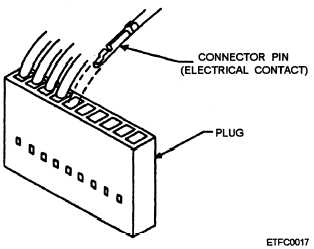Figure 2-26.—Wiring harness connector plug (rectangular)
assembly.
connect to an internal connector receptacle as part of the
cabinet wiring harness.
NOTE
IF A CONDUCTOR MUST BE
COMPLETELY OR PARTIALLY
REPLACED, REPLACE IT WITH THE
SAME GAUGE (AWG) AND TYPE OF
CONDUCTOR. SEE THE TECHNICAL
MANUAL FOR EXACT ORDERING AND
REPLACEMENT INFORMATION.
External Connectors
The external connectors of a computer are designed
to receive electrical power from power sources, send or
receive data (input/output) to or from other computers
or digital equipment, and to interconnect units of the
same computer together. For example, the computer
uses external connections to load operational programs
and test programs that are stored externally on a
magnetic tape unit. It also uses external connections to
communicate with other computers or peripherals
and/or other systems (display and/or communication).
The computer’s prints, wire listings, owner’s manual,
CSTOMs, SOMs, and/or systems doctrine or equivalent
will provide the exact jack, channel or port, and pins
assignments of where power and/or data enter or leave
the computer.
CAUTION
WHENEVER CONNECTIONS FOR
POWER AND DATA ARE DIS-
CONNECTED OR RECONNECTED,
ENSURE THAT THE POWER TO THE
COMPUTER AND THE POWER
SOURCE HAVE BEEN SECURED AND
THE PROPER TAG-OUT PROCEDURES
HAVE BEEN FOLLOWED FOR
SECURING THE POWER SOURCE.
POWER REQUIREMENTS OF COM-
PUTERS.— The power requirements for computers
vary. The requirements depend on the type of computer
and/or where the computer is used-on ship or ashore.
Computers are designed to accept different combina-
tions (voltage, frequency, and phase) of primary power.
A couple of examples: for a large NTDS computer
aboard ship, the requirement is 115 Vac, 400 Hz,
3 phase; whereas, a microcomputer computer ashore
uses 115 Vac, 60 Hz, single phase.
You need to know the primary power source for
your computer system. Become very familiar with the
location and operation of your computer’s power
source. Know the exact location of power panels in
your spaces and know which circuit breakers to secure
for routine maintenance and emergency situations. We
discuss computer power supplies in chapter 4.
EXTERNAL CONNECTOR RECEP-
TACLES.— External connector receptacles receive the
plug of a cable (conductor). The cables carry power and
data. External connector receptacles and their plugs
come in all sizes and shapes. Like internal receptacles
and plugs, they, too, are keyed or because of their
physical shape, can only be mated one way. Power
cables and cords are fairly standard. We, therefore
concentrate our discussion on some of the I/O
connections used for parallel and serial data transfers.
The physical shape (architecture) of these connectors
does not have anything to do with the standard or the
format (parallel or serial) used for the data transferred.
Some of the more common series of connectors used
for parallel and serial data transfer include the
following:
Parallel —MIL-C-series—M28840, M38999, and
M81511; Centronics Parallel; MTIDC or IDC; “D”
series; and Nonstandard series
2-21


